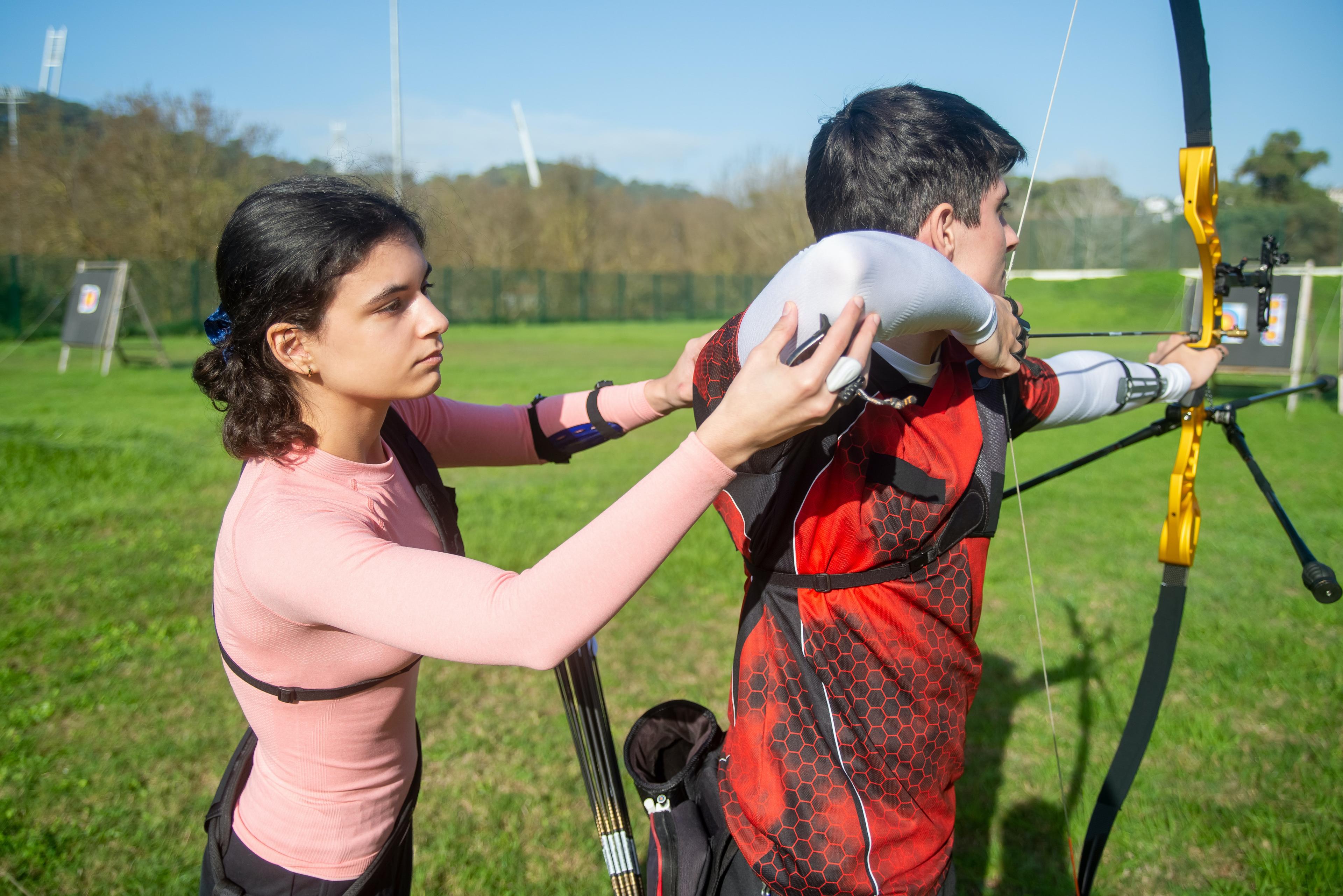


How to Progress Children to Olympic Archery Level
21 September 2023
Archery is a historical activity, thousands of years old, and first used for human survival in hunting and warfare.
From the first most basic bows and arrows, modern archery has gradually developed into a well-known and popular sporting activity, using different equipment designs to suit the skills needed for several archery disciplines.
First appearing in the Paris Summer Olympics of 1900 with some interruptions after, archery became a permanent fixture in 1972.
Olympic Basics
You will need to be familiar with some Olympic archery basics to progress your children to the Olympic Archery level -
● Of the many types of bow available, the Recurve bow is one of the older, more traditional designs and is the only bow used in the Olympics. This should be your starting point.
● Target archery is the only competition discipline in the Olympics. Other disciplines will be helpful in a supporting capacity, but Target archery should be your focus.
● Athletes performing in Olympic archery compete in five events: individual male and individual female events, male team and female team events, and appearing in the Tokyo Olympics of 2020 for the first time, one mixed event.
The Olympic Archery Journey
Once you know where to start and where you’re going, it’s time to look at the Olympic Pathway that will get your child there.
The International Olympic Committee recognises the World Archery Federation’s (WA) work in archery, and the WA brings together more than 160 member associations, including ArcheryGB, the UK's national governing body for archery.
The ArcheryGB website is undoubtedly the best source of information available to map your child’s progress to the Olympics. Within its web pages, find the Olympic Performance Pathway with its mission statement -
‘Identifying, nurturing and preparing athletes to realise their potential as performance archers and flourish as individuals.’
Olympic Performance Pathways are customised to suit the athletes' needs, and the level and intensity of support will vary. In turn, the athletes offer dedicated practice and commitment to their individual journeys, of which no two are the same.
A typical performance pathway will progress the athlete through progressive stages of development.
● Find a Club
ArcheryGB makes finding an affiliated club easy. Simply input your postcode and how far you will travel to see a list of your nearest archery clubs.
● National Talent Development Programme
Sign up for the National Talent Development Programme, open to all interested recurve and compound archery athletes under 20, keen to improve their technical skills and meet other like-minded archers.
Those archers showing the right skills and behaviours have an annual opportunity for selection to the National Age Group Academy or Northern Ireland Performance Academy.
● National Age Group Academy and Northern Ireland Performance Academy
Selection to these academies is a significant step for young archers under 20 on the Olympic Performance Pathway.
The youngsters work with a dedicated Pathways coach and attend weekend skills camps to develop essential personal and technical skills and abilities to become internationally competitive young archers.
● Conversion Academy
Finally, talented young athletes reaching the top of the Olympic Pathway receive invitations to enter the Conversion Academy and attend an induction process.
Through specialist training and support, the Conversion Academy aims to deliver senior international competitors in archery.
Conclusion
The Olympic Performance Pathway laid out by ArcheryGB, who are unquestionably the experts in archery development, is the most straightforward way to progress children to the Olympic archery level. By starting in ArcheryGB affiliated clubs, children’s talent for the sport will most likely be sought and spotted, with subsequent access to the Olympic Performance Pathway.
For those at the top of their game who don’t progress beyond the Conversion Academy, other opportunities are available via the Competition Pathway, which provides an alternative route, or within the Workforce Pathway to provide the expert coaches and specialist support staff to keep ArcheryGB going.
